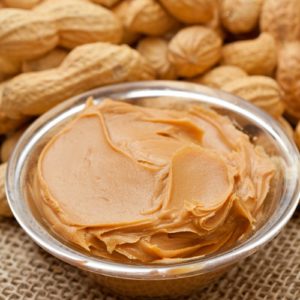According to the National Peanut Board, March is National Peanut Month. This tiny legume has been ground into butters, boiled, turned into candy (burnt peanuts, anyone?) and even shelled and tossed onto bar floors all across the globe. You may have used this legume in your Austin culinary arts career to add some nutty, salty flavor to your recipes without knowing much about them. In honor of National Peanut Month, here are some facts about peanuts:
How do peanuts grow?
Take a second to envision what you think a peanut plant looks like. Is it a towering tree or a round bush? Unlike their nutty cousins the walnut and pecan, peanuts do not grow on trees. They actually mature to be only about a foot and a half tall. The plant is a small, leafy green one with yellow flowering buds. Don’t waste your time looking for peanuts up top – the part that we eat is actually found underground, where it grows from the roots. That hard shell keeps the fruit clean and prevents it from rotting before it is eaten. Each plant makes about 40 peanut pods during the four or five months that it takes to grow from a single seed to a fruit-bearing plant. Once the seeds have matured, farmers use a combine to remove the plants from the soil and take the peanuts off the roots. Often, the plants are removed from the soil and left to air dry or cure in full sun for four day to a week before separating the peanuts.
You, too, can grow a peanut plant
If you want to grow your own peanuts, you can do it at home. You’ll need a few raw peanuts that have not been salted, boiled or baked, along with sandy or sandy loam soil and a 6-8 inch diameter pot. Place the peanuts in water to soak for 24 hours before you plant them. The next day, fill the pot with soil to one inch from the top of the edge. Use your finger to push three peanuts into the soil an inch to two inches deep. Cover the peanuts with the dirt but do not pack it in tightly, as the seeds need to breathe. You’ll want to water the peanuts so that the soil is moist, but avoid creating standing water. This is why a drainage hole is key. The best temperature for your peanuts to grow is about 80 degrees Fahrenheit, but anything above 65 should foster growth. Direct sunlight will encourage your plant to start, and within 45 days you should see some sprouting. Often the plants don’t get enough nutrients to make peanuts, even if they do grow into a full plant. However, if you can keep it alive for more than three months, you just might have your very own peanuts to snack on or add to a dish.
Fun Facts
Check out these interesting facts from the NPB:
- The 12-ounce jar of peanut butter in your pantry contains about 540 individual nuts.
- In 2013, Delta airlines bought 69.6 million packs of peanuts to dole out to passengers on its flights.
- If you love peanut butter, visit the world’s largest peanut-butter-producing factory, Jif, which makes 250,000 jars per day.
- A typical peanut farm covers 100 acres. That’s more than 75 football fields of peanut plants.
- The popular orange circus peanut candies that have a marshmallow texture and taste like bananas actually have zero peanuts. They are made out of sugar, corn syrup, pectin and artificial flavors. People with peanut allergies can even eat them so long as they are made on machines that are not shared with real peanut products.




